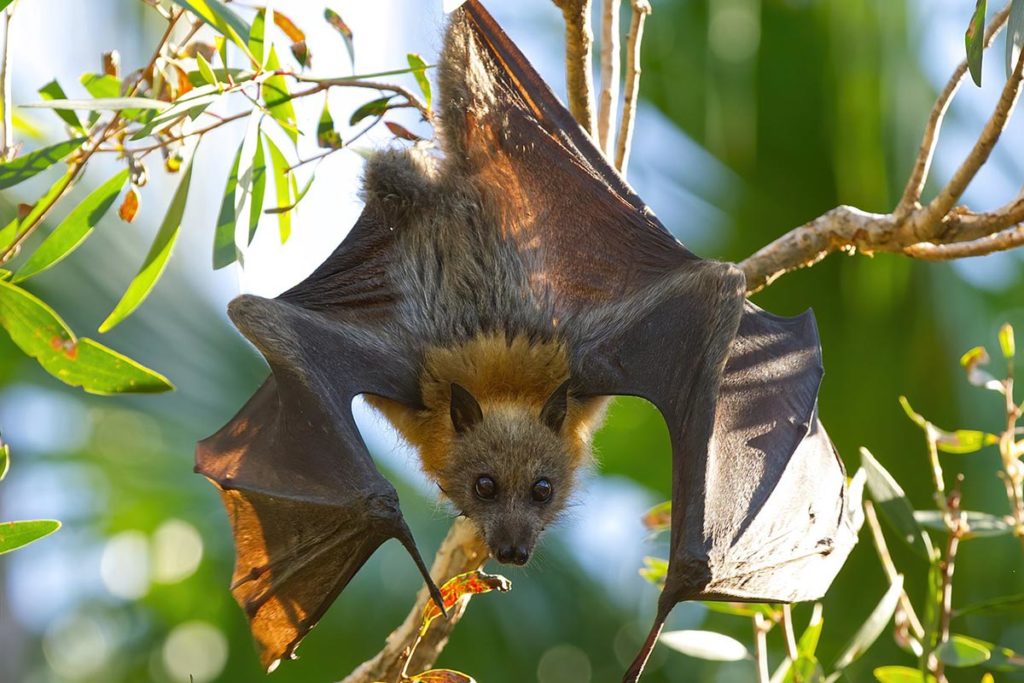ABOUT THE SPECIES
The grey-headed flying fox is one of the largest bats in the world, with a wingspan over 1m wide. They have grey fur on their heads, an orange scruff around their neck and dark brown bodies. They are found across Australia’s east coast and live in urban areas, forests and intertidal mangroves. They are most active at night when they forage for food travelling up to 50km to find fruit and nectar from flowering native gum trees. Flying foxes live in large colonies called ‘camps’ which can include thousands of bats and require large roosting trees as a result. They migrate up and down the east coast of Australia feeding on seasonal fruit & flowers. Flying foxes support healthy forests, as they help to distribute seeds in their poop and pollinate native trees. Image courtesy of Andrew Mercer, CC BY-SA 4.0.
ABOUT THE ORGANISATION
Although they once appeared in large groups of millions, we’ve seen flying fox numbers decline to merely thousands. This is primarily due to the destruction of food and roosting sites from land clearing for agriculture, forestry and urban sprawl across its range. Heat stress can also lead to mass ‘camp’ deaths, making climate change and more frequent heat waves an increasing threat. ACF is campaigning for urgent action on climate change and for strong national environment laws that will protect and restore the critical habitat that threatened species like the Grey-headed flying fox need to survive.
You can vote for ACF’s nomination, the Grey-headed flying fox, right here at The ANiMOZ Aussie Wildlife Vote 2020!

